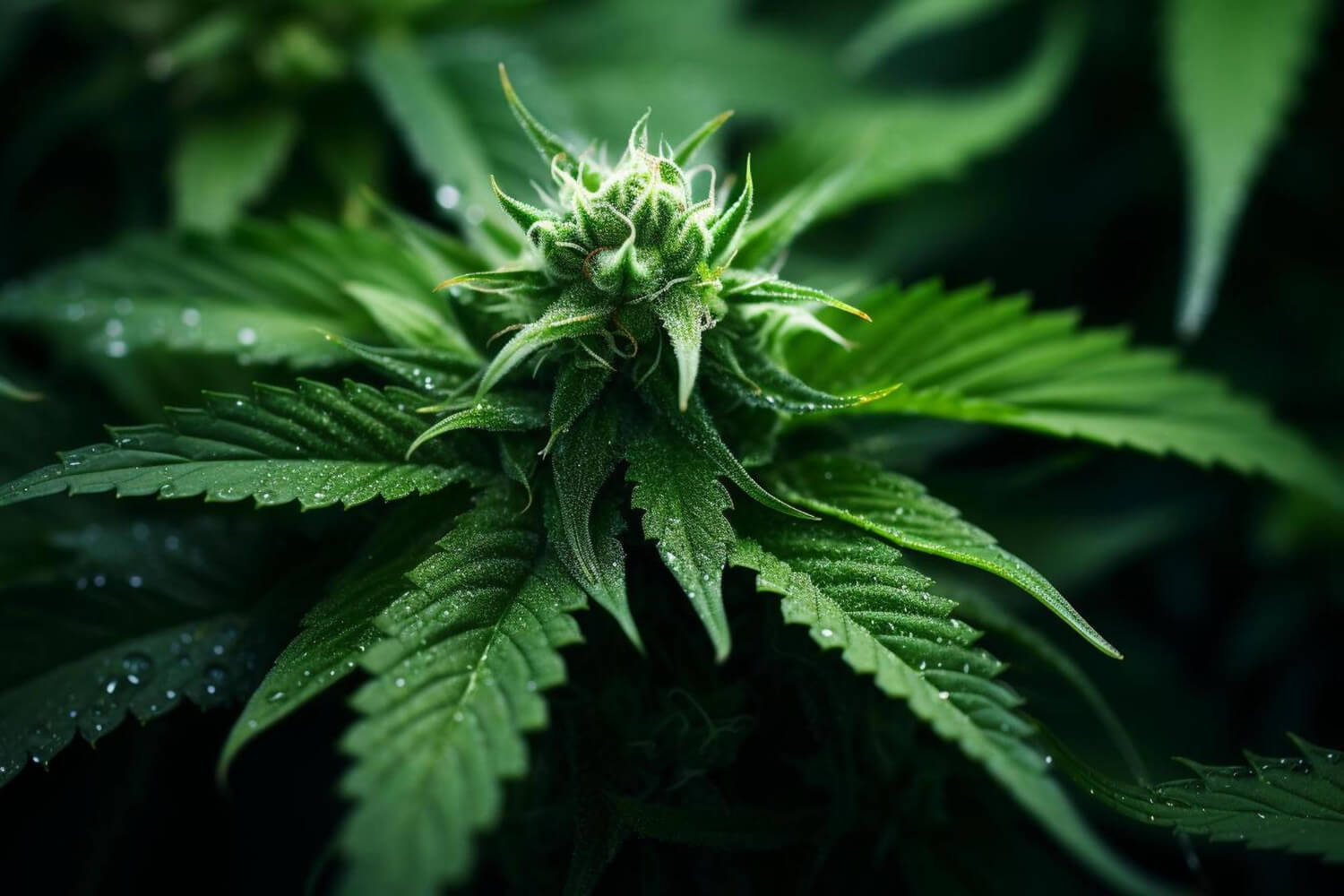What is a cannabinoid? If you have ever consumed marijuana before, you have consumed cannabinoids. But you don’t need to even do that, as we create our own cannabinoids. Cannabinoids have a world of health benefits, and we even need them for survival. So let’s unravel the mystery behind them.
A Definition of Cannabinoid
Cannabinoids are classes of compounds known for interacting with receptors in our bodies that signal actions that regulate various physiological processes. One of the reasons it can feel daunting when trying to understand what cannabinoids are is because they have different places of origin. Thankfully, we can unravel much of their mystery by learning those.
Phytocannabinoids
When you hear ‘cannabinoid’, most are referring to the chemical compounds that live in the resin (trichomes) that collects on the flowers, leaves, and stalks of the cannabis plant. These in truth are phytocannabinoids. And it’s an important distinction because all animals — except for the poor insect — produce their own cannabinoids called endocannabinoids.
Cannabis plants likely produce over 100 different types of cannabinoids that can interact with the body in different ways — largely due to their various sizes and the numbers they individually appear in.
Cannabis creates phytocannabinoids for the same big reason we do. Phytocannabinoids have various protective properties, including benefits that protect against insects and ultraviolet light.
Endocannabinoids
Anandamide and 2-arachidonoylglycerol (2-AG) are endogenously produced cannabinoids essential to our health. They trigger various biological functions that include eating, learning and memory, anxiety, metabolism, sleep, and immune function.
Now, perhaps funny, phytocannabinoids, including the notorious tetrahydrocannabinol (THC) and the rising star cannabinol (CBD) don’t really look like the endocannabinoids we make. However, they work among the same pathways in the body.
Then the discovery of phytocannabinoids and what happens when we consume them directly led to the discovery of endocannabinoids and the biological system they mainly work within, called the endocannabinoid system (ECS).
But we aren’t done yet! While phytocannabinoids help out the endocannabinoids by doing their jobs for them, they also help the body retain greater levels by temporarily inhibiting fatty acid amide hydrolase (FAAH) enzymes that can prematurely break them down.
Cannabinoids and Endocannabinoid System: How Do They Work?
Our regulatory systems are scattered throughout our bodies, and that especially goes forthe endocannabinoid system that’s composed of cell receptors that can be found in the brain, immune system, and on. You can even find these receptors in our hair.
The ECS is primarily composed of two main receptors:
- CB1 Receptors — Cannabinoid 1 receptors are abundantly found in the central nervous system (brain and spinal cord). These receptors are essential for regulating neuronal transmission and physiological processes. This includes pain, inflammation, appetite, and memory.
- CB2 Receptors – Cannabinoid 2 receptors are primarily found in the peripheral immune system and the CNS in the hippocampal CA2/3 pyramidal neurons and glial cells. When turned on, they modulate immune responses, i.e., inflammation. This gives them anti-inflammatory effects.
Cannabis cannabinoids interact with our cannabinoid receptors in various ways. They can directly bind to them as an agonist that activates the receptors and produce biological responses. Then they can also bind as antagonists that block receptors from being activated by compounds.
The benefits of activating cannabinoid receptors are pretty clear. When needed, the body can synthesize endocannabinoids to regulate physiological processes. These processes protect it from outside influences that cause imbalances in the body. This process is known as homeostasis.
When the body is under too much duress, it can experience a endocannabinoid deficiency. This makes phytocannabinoids a clever way to fix that.
So, you might be wondering why we would ever want to block the activation of cannabinoid receptors? Well, like most things in life, too much of a good thing can be bad. Cannabinoids’ antagonist effects have been explored as a potential treatment for conditions like obesity and addiction.
Ultimately, we have a long way to go before we understand just how cannabinoids interact with the ECS.
Potential Benefits of Cannabinoids
The potential benefits of cannabinoids are extensive. I know that can seem like a scam, but their key ability to interact and influence neurotransmitters and receptors like dopamine, serotonin, and cannabinoid receptors, lays out compelling evidence of their benefits.
Cannabinoids show almost too good-to-be-true promise in treating rare forms of epilepsy along with treating nausea and vomiting associated with chemotherapy. Certain cannabinoids, such as CBD, can help reduce nearly all forms of anxiety while potentially supporting a better mood.
Excessive inflammation is seen in several common health conditions, both causing and exacerbating them, and this has many in the medical community excited about cannabinoids’ ability to reduce inflammation along with pain.
Some other potential benefits of cannabinoids include lower blood pressure,help with drug addiction, help with gastrointestinal disorders, better sleep, a healthier appetite, and help with central nervous system disorders such as multiple sclerosis.
Due to laws that have, and still do, restrict rigorous government-funded studies, research on the benefits of cannabinoids has been slower than many have hoped.
As well, many of the cannabinoids naturally occur in traces and can be quite small, which has posed issues in discovering how they work in the body and with each other.
Both cannabinoids and terpenes have synergistic effects that change their potential benefits. Labeled the entourage effect, studies have been back and forth on the degree this synergy occurs.
However, it’s already becoming more common to see different cannabis products with different cannabinoid profiles to better tailor their results, i.e., CBD for anxiety. This will only become more of the case as research unlocks the mystery behind cannabinoids and their benefits.
How Can You Consume Cannabinoids?
The most common way to consume cannabinoids is by smoking. Though, you might find vaping produces preferable results, a better bang for your buck, and easier on the lungs.
But your lungs don’t need to be in the picture, thanks to edibles that help disguise the grassy flavor of cannabis. Here are six ways you can consume cannabinoids.
1. Smoking
It’s synonymous with marijuana, and many tokers swear there is no better way to get high than smoking. Bongs, joints, bowls, the list goes on; there are many ways to combust cannabis, releasing all those delicious cannabinoids into your system. Please, note that this shouldn’t be the preferred way of consumption as it can be harmful.
2. Vaping
Cannabinoids are sensitive to heat and have different boiling points, and vaping caters to them with vaping devices that offer cooler temperatures, releasing cannabinoids at the perfect time without destroying them.
3. Edibles
Brownies, gummies, and on; edibles are a delicious way to consume cannabinoids while protecting your lungs.
4. Capsules
Many people consume cannabinoids for their health, and the last thing they want is a consumption method that can negatively affect health. That’s why capsules and tablets are perhaps the best ways to consume cannabinoids. Like edibles, they skip the lungs, but unlike them, they are essentially calorie-free.
5. Tinctures
Cannabinoid tinctures, with CBD oils being the most famous, are a fantastic way to consume cannabinoids. Simply hold the liquid under the tongue for 30-60 seconds before swallowing to promote better absorption and faster effects.
6. Topicals
When you want to harness all of the cannabinoids’ power into a localized area, topicals are the way to go. Unlike the other methods of ingestion, they will largely avoid producing psychotropic effects seen with cannabis products high in the cannabinoid THC.
What to Look for in the Best Cannabinoids?
There are several things you can look for when selecting the best cannabinoids for your personal needs.
1. Effects
Different cannabinoids, along with the terpenes they usually come with, have different effects on the body and mind.
For example, high-THC products often provide the greatest therapeutic benefits, dulling pain and stimulating appetite, but will trigger a high as a result of this ability. But some cannabis products, such as CBD oil, won’t cause you to feel high but can still mildly help with issues such as pain and anxiety.
2. Terpene Content
Terpenes give cannabis plants their incredible range of smells and flavors and interact synergistically with cannabinoids, changing their effects. In fact, the different effects of sativa and indica cannabis strains are largely a result of their different terpene content.
3. THC:CBD Ratio / Cannabinoid Profile
While there are many cannabinoids — all with various effects — you may find that just paying attention to the THC:CBD ratio works best at first. CBD will directly block THC from overstimulating CB1 receptors, dulling its ability to cause a high.
Generally, a 1:1 ratio provides a nice balance between the two and is likely to result in mild euphoria, at best.
4. Safety
Be on the lookout for terms like third-party lab testing, organically grown, and CO2 extraction.
A certificate of analysis (COA) ensures accurate cannabinoid and terpene content, which you can usually find on the product packaging or the manufacturer’s website. This is especially important to see if your state has restrictions on cannabis products.
5. Ask For Help
Cannabis has around 1000 structural classes of compounds that can all affect the potential benefits we receive from them. So don’t feel ashamed to ask questions, and your local budtender is perfect for that.
FAQs
What are the main cannabinoids in cannabis plants?
Research has discovered around 100 cannabinoids so far. But most of those appear in very small amounts. THC and CBD are the main two cannabinoids, with cannabichromene (CBC), cannabigerol (CBG), and cannabinol (CBN) rounding out the big five cannabinoids.
What do cannabinoids do for the body?
Cannabinoids influence the activation of multiple receptors in the body. In most cases, they don’t overstimulate the receptors, resulting in therapeutic homeostatic processes the body is used to. However, some, well, mainly THC cannabinoids, can overdrive those receptors and produce the high associated with marijuana.
Is it dangerous to take cannabinoids?
Various factors, from the specific cannabinoid to the method of consumption, influence the safety of cannabinoids. For example, THC’s overstimulation of CB1 receptors makes it more concerning than CBD. However, CBD isn’t free of side effects, as it can interact with medications metabolized by the liver’s cytochrome P450 enzyme system.
Are there any side effects to consuming cannabinoids?
General side effects of consuming cannabinoids include dizziness/lethargy, dry mouth, cognitive/motor control impairment, and interactions with medications. High dosages over long periods, especially when using items high in THC, can lead to withdrawal and cannabinoid hyperemesis syndrome, which causes severe bouts of vomiting.
How are cannabinoids used?
Cannabinoids are used for many reasons, both for medical and recreational fun. Research shows cannabinoids can help alleviate pain, anxiety, nausea, digestive stress, and more. Cannabinoids, particularly THC, which has psychotropic effects that can make food, music, etc. more intense, are used because, well, that high can be pretty fun.
What are the synthetic cannabinoids?
Synthetic cannabinoids are man-made compounds designed to mimic the effects of naturally occurring cannabinoids, such as CBD. There is a significant promise that they will largely replace medical cannabis. However, synthetic cannabinoids are often much more potent. This means they can have unpredictable and dangerous effects.
Has the FDA approved the use of cannabinoids?
The FDA has not approved the use of cannabis. However, they have approved a few medications that contain individual cannabinoids. Epidiolex – This CBD isolate treats seizures associated with Lennox-Gastaut syndrome and Dravet syndrome. Marinol and Syndros – These synthetic THC isolates are approved for chemo-induced nausea and vomiting.
Is it legal to buy cannabinoids online?
Thanks to the 2018 Farm Bill, it is federally legal in the United States to buy cannabinoid products containing no more than 0.3% THC by volume. No federal limits are placed on any cannabinoid besides delta-9 tetrahydrocannabinol. However, regulations can vary by country and state.





